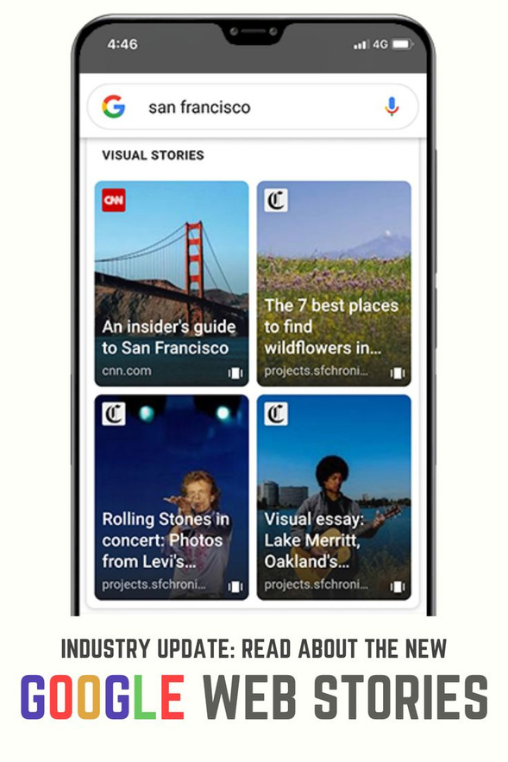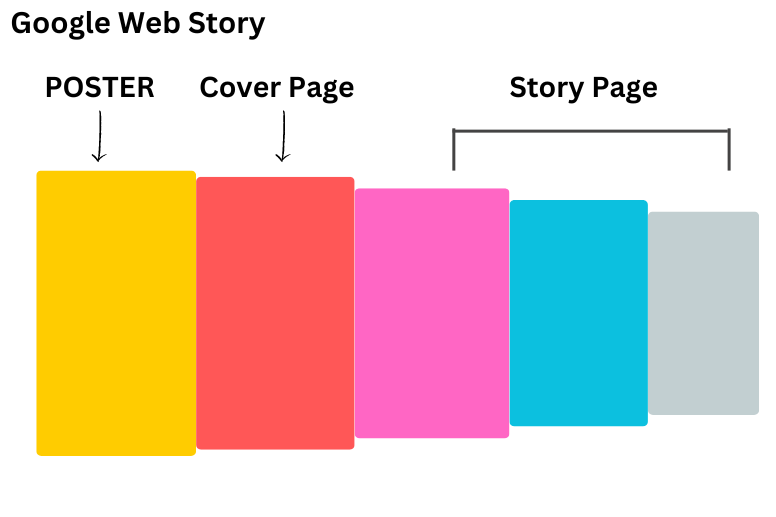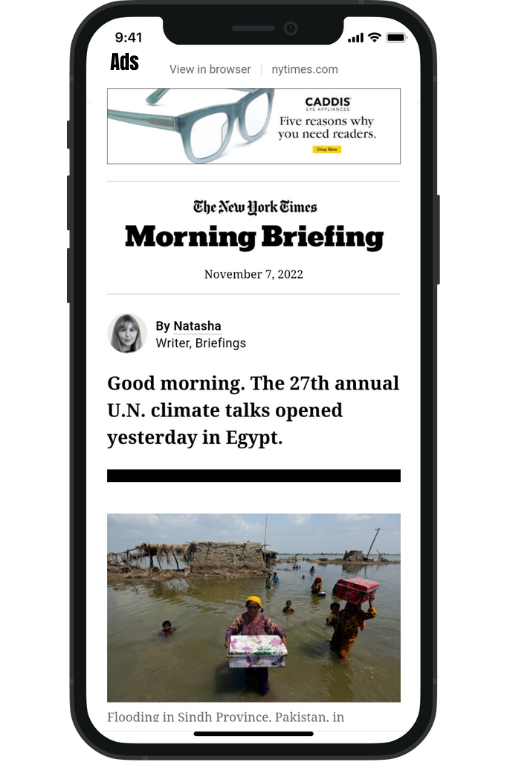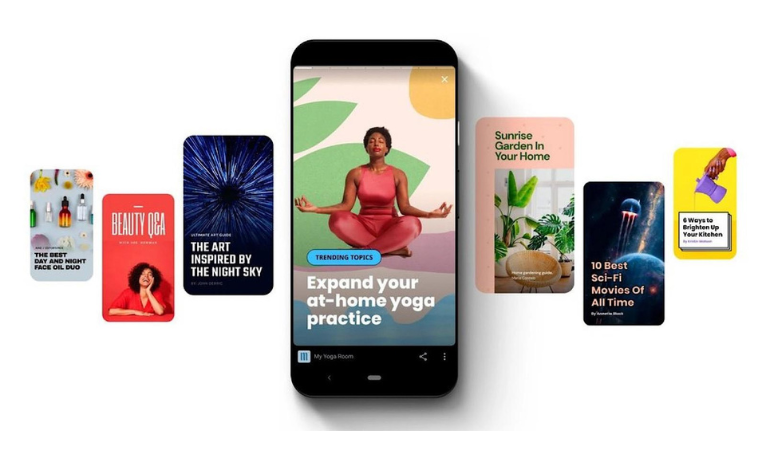- [email protected]
- Lahore Punjab Pakistan
Google Web Stories:
How to Create Compelling Stories + Tips & Tricks in (2024)

Google Web Stories: How to Create Compelling Stories
+ Tips & Tricks in 2024
Google is not a social media channel per se, but one of its features, Google Web Stories, is similar to the stories format that you’d see on popular sites like Instagram.

It poses a unique opportunity for creators, so read on to learn all about Google Web Stories, what they can do for your business, and how to create them and make an impact.
Table of Contents
- 1. What are Google Web Stories?
- 2. Google Web Stories Examples
- 3. Benefits of Web Stories on Google
- 4. How to Create a Google Web Story
- 5. Google Web Stories SEO Checklist
1. What are Google Web Stories?
Google Web Stories are interactive, video-first pieces of content that creators can use to share information with audiences through tappable pages featuring audio, images, and text. The Web Story format was formerly known as AMP Stories.
Google says that styles that work the best with the format are first-person narratives, evergreen or updating stories, live stories, educational and experiential stories, and quizzes and polls.
Web Stories appear in standard Google Search results and as carousels in Google Discover, and you can also add them to a newsletter and link to them from your social media accounts. The image below shows a Web Story in Google Discover on the left and Google Search on the right.

Google Web Stories Format
Web Stories have three parts: a poster, a cover page, and story pages.
- The poster is the first thing someone sees in your Story, and Google describes it as the packaging.
- Your cover page is the first page of the content of your story, and story pages are where you begin to tell your story and narrative with video, text, and your preferred assets.

2. User Examples of Google Web Stories
Certainly! Here are a few examples of Google Web Stories:
Top 5 Most Anticipated Album Releases for Fall
Internet Money
3. Benefits of Web Stories on Google
Apart from having full ownership of the stories, hosting them on your website is an advantage! They are not bound by a 24-hour time limit, unlike Instagram and Facebook.
It helps you reach a wider audience. You can also boost your SEO with easy indexing. Another benefit is you can track the performance of your web stories on Google Analytics. You can also send real-time notifications to your users using the Live Story feature.
But what a lot of brands and marketers don’t know is that Google Web Stories are also a source of revenue! Dive deeper to understand the benefits of Google Web Stories.
4. How to Create a Google Web Story
Creating a Google Web Story involves several steps, but it's relatively straightforward. Here's a basic guide to get you started:
Choose a Platform
There are several platforms and tools available for creating Web Stories. Google offers its own Web Stories plugin for WordPress, or you can use other third-party tools like MakeStories or Newsroom AI.
Install the Plugin or Access the Tool
If you're using WordPress, install and activate the Web Stories plugin from the WordPress plugin repository. If you're using a third-party tool, sign up or log in to access the Web Stories editor.
Create a New Story
Once you have access to the Web Stories editor, start a new project by clicking on the "Create New" or "Start a New Story" button.
Design Your Story
Use the editor's drag-and-drop interface to add images, videos, text, and interactive elements to your story. Arrange your content in a visually appealing layout and customize the appearance of your story using the available styling options.
Add Pages
Create multiple pages or slides to tell your story effectively. Each page can include different content elements such as images, videos, text, and interactive features.
Enhance with Interactive Elements
Incorporate interactive elements like polls, quizzes, clickable buttons, or animations to engage your audience and make your story more interactive.
Preview and Edit
Preview your Web Story to see how it looks on mobile devices and make any necessary adjustments to improve the layout, formatting, or content.
Optimize for Mobile
Ensure that your Web Story is optimized for mobile viewing by using a vertical format with a 9:16 aspect ratio and designing for easy navigation on touchscreen devices.
Publish Your Story
Once you're satisfied with your Web Story, publish it to make it accessible to your audience. If you're using WordPress, you can publish directly from the editor. If you're using a third-party tool, follow the platform's instructions for publishing or exporting your story.
Share and Promote
Share your Web Story on social media, embed it on your website, or promote it through other channels to reach a wider audience and drive engagement.
5. Google Web Stories SEO Checklist
The same standard SEO best practices apply to Web Stories. If you already have an SEO strategy for your business, reference it throughout your process.
You want to add metadata to all elements of your Web Story, as it will speak directly to search engines and discover features that want to learn what’s in them.
You can optimize for this by following along with AMP metadata guidelines.
Your Web Stories are pages on your website, so you want them to be self-canonical. Each of your Stories should have a link rel=“canonical” to itself.
Story titles should be shorter than 90 characters.
Add Web Stories to your site map and don’t include noindex attributes. You can check if you’ve been indexed using the Index Coverage Report.
All Web Stories need AMP structured data.
All Images need alt text to improve discoverability, and video needs subtitles.
Types of Story Ads
Currently, there are different types of story ads that a brand can publish on web stories:
1. Display Ads
These are ads used to drive traffic to the advertiser’s website. They can be in the form of images, videos, text, or audio.

2. Affiliate Links
These are ads with either a call-to-action like ‘swipe up’. You can add this using the page attachment option on the Web Story. Another way is to add definite links to direct the user to the affiliate sites. It is advisable not to use affiliate links in every story; instead, keep them limited.
.png)
3. Brand Deals
Create an individual story that appears like an ad by highlighting your product or service.

Conclusion
Google Web Stories present a powerful and dynamic way for creators and businesses to engage with their audiences through visually appealing, interactive content. Unlike traditional social media stories, Google Web Stories offer the benefits of longevity, SEO potential, and full ownership, allowing you to reach a wider audience and even generate revenue.Featured
Benefits Of Search Engine Optimization
Google processes billions of searches every day, many of which come from potential customers. When your brand appears prominently in these search results, it represents a significant business opportunity. In this article, we will explore the importance of SEO and the benefits it can bring to your business.
Read MoreFeatured
Social Media Marketing Jobs
Explore the various career opportunities available in social media marketing, including job roles, required skills, and how to get started in this dynamic field.
Read MoreFeatured
Web Developer Salary in the United States
Understand the current salary trends for web developers in the United States, including factors that influence salaries and how you can maximize your earning potential.
Read MoreFeatured
Top 10 Ways to Earn Money with Website Development Skills
Discover ten effective strategies for monetizing your website development skills, including freelance opportunities, consulting, and more.
Read MoreFeatured
YouTube Video Downloader
Learn about various tools and methods for downloading YouTube videos for offline use, including benefits and legal considerations.
Read MoreFeatured
7 Ways to Make Money with ChatGPT (AI)
Explore seven innovative ways to leverage ChatGPT and other AI technologies to generate income and enhance your business strategies.
Read MoreFeatured
AI Website Developer
Discover how AI is transforming website development, from automated design to advanced user experience enhancements.
Read MoreFeatured
What is Digital Strategy?
Understand the concept of digital strategy and how it can be effectively implemented to achieve your business goals.
Read MoreFeatured
How to Make Money Online
Explore various methods and strategies to make money online, including passive income streams and entrepreneurial opportunities.
Read MoreFeatured
How to Create a Website from Scratch
A step-by-step guide on building a website from scratch, including tips on design, development, and deployment.
Read MoreFeatured
How to Run Successful Facebook Ads
Learn the essentials of creating and managing effective Facebook ads, including targeting, budgeting, and measuring success.
Read MoreFeatured
Create Effective Online Ad Campaigns?
Discover strategies for generating income through freelancing, including finding clients, setting rates, and managing projects.
Read MoreFeatured
Web design: A Comprehensive Guide
Discover strategies and insights into web design with our comprehensive guide.
Read MoreFeatured
Google Web Stories: How to Create Compelling Stories + Tips & Tricks in (2024)
Learn how to create compelling Google Web Stories with our tips and tricks for 2024.
Read MoreFeatured
Learn-How to Build a Real Estate Website
Explore the ultimate guide to building a real estate website with step-by-step instructions.
Read MoreFeatured
Real estate social network
Delve into the world of real estate social networks and discover the latest trends and strategies.
Read MoreFeatured
Web Design Essentials for Optimal User Experience
Discover essential web design principles to enhance user experience and design effectiveness.
Read MoreFeatured
Real Estate Social Network
Explore the dynamics of social networks within the real estate industry.
Read MoreFeatured
Instagram vs. TikTok: A Battle of Engagement – Which One Is Right for Your Business?
Compare Instagram and TikTok to find out which platform suits your business best.
Read MoreFeatured
India to Become Largest Software Developer by 2027: AI Fueling Economic Boom
Explore how India is set to become a leading software developer by 2027 with the help of AI.
Read More






.png)












